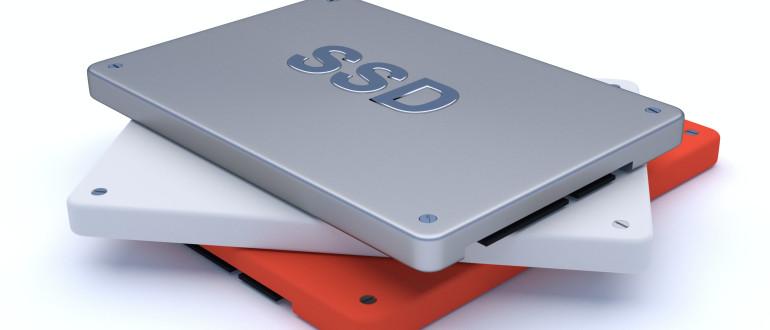The world of modern electronics is actively developing, and today you will not surprise anyone with the purchase of an SSD drive. This type of solid state drive is new, but it has spread incredibly quickly. When choosing an SSD drive, buyers very often have a number of problems with a wide range of different values.
At the same time, it is rather difficult to find exact solutions for them without detailed investigation. In fact, it is enough to spend literally a few minutes to clearly understand how to choose the right SSD drive for a computer or laptop in 2020, while not overpaying for those fancy features that your computer will not need.
Content
Difference between SSD and HDD
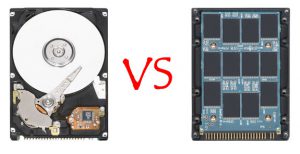
Classic hard drives are officially called HDDs ("Hard Disk Drive"). They accompanied personal computers and laptops for almost the entire history of their existence. They are the most important components, since absolutely all files are stored on them, including the operating system. Accordingly, without these details, it was impossible to start the computer.
However, a new type of storage has been actively spreading recently. We are talking, of course, about SSD (English "Solid-State Drive"). Solid-state drives are gradually winning the hearts of users with their speed of operation and excellent technical parameters. Even computer manufacturers are switching to SSDs, using them either instead of or in conjunction with HDDs. So what's the difference?
When deciding which is the best choice for a computer, hard drive or SSD, the user should have a clear picture of the pros and cons of both options. Of course, there are more advantages to an SSD:
- increased speed of work, in particular, reading and writing information;
- heat and energy efficiency;
- compactness;
- increased resistance to damage (overheating, mechanical shock);
- silent work.
But the hard drive also has its advantages:
- protection against electrical damage;
- low cost;
- the ability to recover information in case of loss.
From a technical point of view, the difference between the discs lies in the specific characteristics. A detailed comparative analysis of this data is rather boring, so it is not worth presenting it (and there is no point in it), but its result is predictable, if you have the financial capabilities, then it is better to choose an SSD drive, since it will provide the greatest performance, speed and efficiency with the file system.
SSD Selection Criteria
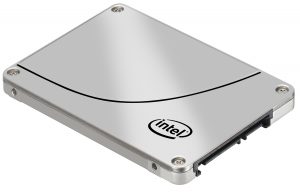
Solid state drives (just like hard drives) have a number of technical characteristics that are at the same time criteria for choosing an SSD. A number of parameters that determine the operation of the device refer to them: types and amounts of memory, connection methods, read and write speed, service life to failure, as well as additional properties. It is worth noting that it is impossible to find the perfect combination of all parameters, but choosing a fast and high-quality SSD drive based on them is quite simple: you just need to familiarize yourself and understand its technical side.
Volume
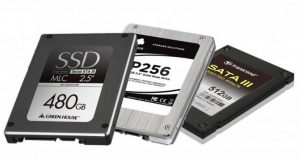
The most popular criterion for an SSD is the choice of data volume.The amount of information that an SSD can store is one of the most important parameters. Classic hard drives in HDD format are traditionally equipped with 500 GB or more memory (older models). However, SSDs are smaller. But there is a perfectly logical explanation for this.
In order to choose a good SSD drive, you need to define its role. Most often, you can find computers in which an SSD is installed along with an HDD, while the volume of the first is several times less than the second. For example, a solid state drive is rated for 60 GB and a hard drive for 500 GB. This suggests that the SSD is used only for the system, and the main one is the classic hard drive. However, laptops (usually gaming) have either a separate 500 GB solid-state drive (rarely 1000 GB), or the same disk in combination with an HDD of about 1000 (1500) GB.
If you plan to use an SSD for the system, then buy a drive with a volume of 64 GB to 128 GB, this will be more than enough and will not hit your pocket!
Memory types
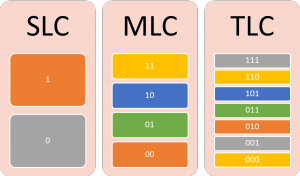
SSDs are characterized by the use of different memory locations, which are classified into different types. There are four of them:
- MLC. This species is the most widespread. It assumes placing two data bits in one cell. Its rewrite cycle is small (from 3000 to 10000 times), but the lower price eliminates this disadvantage.
- SLC. In this case, there is one bit of information per cell. This architecture is suitable for powerful devices that are constantly handling massive amounts of data. Rewriting cycles can be up to 100,000 times, the operating speed is also excellent, but the cost of an SSD with this type of memory is much higher than others.
- TLC. The storage architecture assumes that one cell corresponds to three bits of information. The number of rewriting acts does not exceed 3000 times (rarely - 5000). The price of such a budget SSD is an order of magnitude lower, so those who like to save money should take a closer look at this option.
- 3D-V-NAND. The latest development in data storage. It does not use MLC or TLC, but a special flash memory, thanks to which the amount of information to be recorded per unit area increases. This type is still rare, but in the near future it can make a splash.
Connection methods
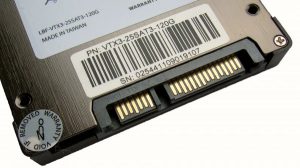
The connection of a solid-state drive, like a hard drive, takes place inside the case of a laptop or computer using special interfaces. The latter can be of various types, among which are:
- SATA II
- SATA III
- mSATA
- PCIe
Also, some programmers include M.2 here, but in fact it is a continuation of mSATA.
The most popular interfaces are SATA II and III. The first model is gradually going out of circulation, as the second received a more technological connector and improved contacts, which increase the efficiency of interaction. MSATA works on the same principle, only the model is used in compact computers due to its reduced size. The most efficient option is PCIe, which uses third-party drivers to work, due to which data transfer is several times faster.
Write / read speed
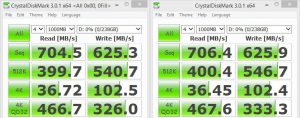
As mentioned above, one of the advantages of a PC SSD is its high write and read speed. There are some small caveats regarding this parameter, taking into account which will avoid unnecessary questions. The fact is that the read speed is usually slightly higher than the write speed, or equal to it. The range of indicators can be designated as:
- write - 350 Mb / s
- read - 450 Mb / s
It should always be remembered that the manufacturer can be a little tricky, indicating the maximum speed, which in the vast majority of cases is higher than the real one. To find out the actual picture, you can read reviews and customer reviews.
An important parameter when choosing a drive is such an indicator as IOPS (the number of random input / output operations per second), the higher this indicator the better, which will provide good speed when transferring large amounts of information.
For normal and comfortable operation, the IOPS value should vary in the range: 45000 - 55000, in more expensive models this figure can reach 90,000.
Service life to failure
Unable to purchase the best SSD drivewithout knowing the drive performance. Above has already been given a classification by type of memory. It depends on it how many times you can overwrite data. The most short-lived (and therefore the most economical) option is TLC. It allows 1000 to 3000 rewriting cycles. For the MLC, this figure is from 3 to 5 thousand times, which is the average. Finally, SLC-type solid state drives are the longest-lasting ones, which can withstand up to 100,000 rewriting cycles.
When buying a good SSD drive, you should not dwell on this parameter, since even the simplest drive will last you for at least 10 years, or even more.
Additional functions
The main task of an SSD is to store files and provide the fastest and most reliable access to data. However, there are some other features as well. For instance, TRIM option... It consists in deleting data that is overwritten in a specific cell. In the hard disk for a computer, when new data is recorded, old identical indicators remain, so to speak, "under the cells." Before overwriting to SSD, the system deletes data from the cell and only then write new ones there. All modern solid state drives support this function, the only question is whether the OS supports it (available with MS Windows 7).
Another interesting function is hidden area... Every high-quality SSD has it, but the user does not have access to it. The fact is that the cells in which information is stored tend to fail. Nevertheless, when one of them "dies", an automatic replacement occurs. The hidden area can be around 30% of the storage capacity. But if you want to buy an inexpensive but reliable SSD-drive, then on their packages you will find an increased volume and a reserve of only 10%. This allows the user to get more memory at a lower cost.
Equipment
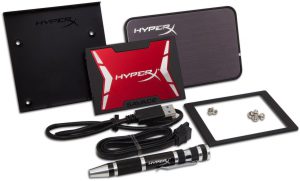
Finding the answer to the question of which SSD is better to buy is often helped by the complete set of the disk. When buying, the seller can offer both the device itself and the kit. If the goal is to buy an inexpensive but good SSD drive, then the first option may be preferred. However, it is best to take all the components. These include cables, 3.5 "slot mount rails and 2.5" USB enclosure. All this will allow you to install the drive without "dancing with a tambourine".
Choosing an SSD drive company
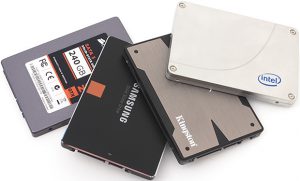
After all the most important parameters have been studied, you can proceed to the main action. Today, not every manufacturer can offer to buy a high-quality and fast SSD drive for their laptop or computer. The most popular among them is Kingston, which for many years has been selling various kinds of components for PCs (including HDD, USB drives). In terms of prevalence, only SSD drives from Sandisk, which came to the solid-state drive segment not so long ago, but managed to prove itself from the best side. Premium quality, but rather expensive products are offered by eminent companies Samsung, HP and Intel... Also, as reliable manufacturers of drives, you can name ADATA and Transcend... The choice here depends more on the price preferences of the buyer.
We recommend watching an interesting video on how to choose the right SSD drive!
Conclusion
Solid state drives are gradually expanding their "sphere of influence" and replacing classic hard drives. The lineup is expanding, manufacturers of components willingly join this segment of the computer parts market. In view of these factors, the question of how to choose the best SSD drive for a computer in 2020 becomes especially relevant.However, a systematic, meaningful approach to the choice will not only allow you to get a reliable SSD drive in a price-quality ratio, but also save money that can be spent on unsuitable options bought out of inexperience.

